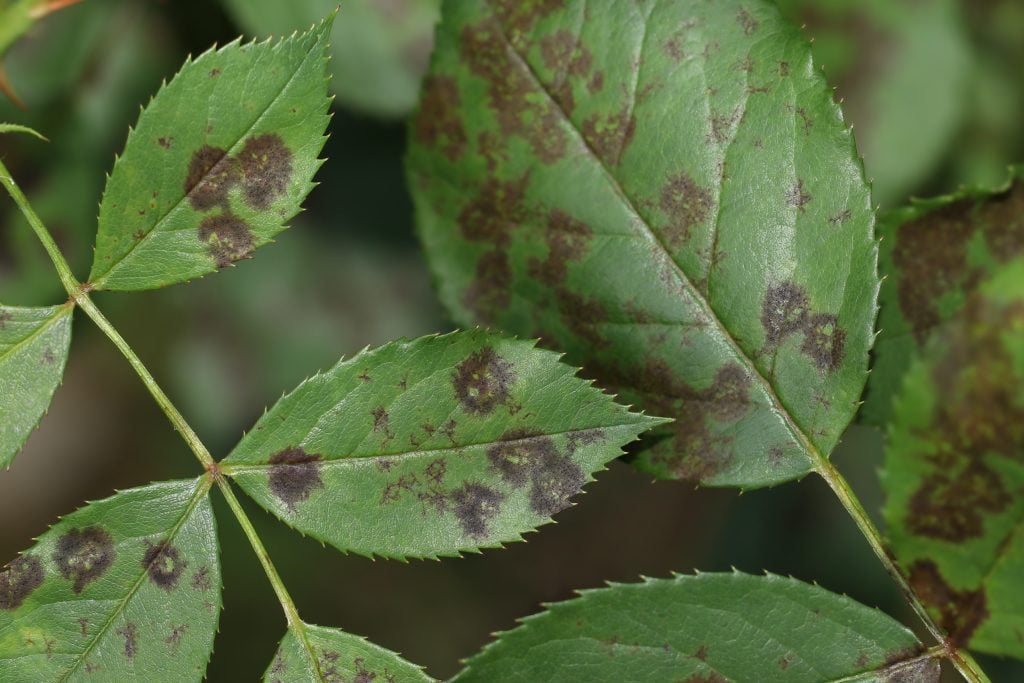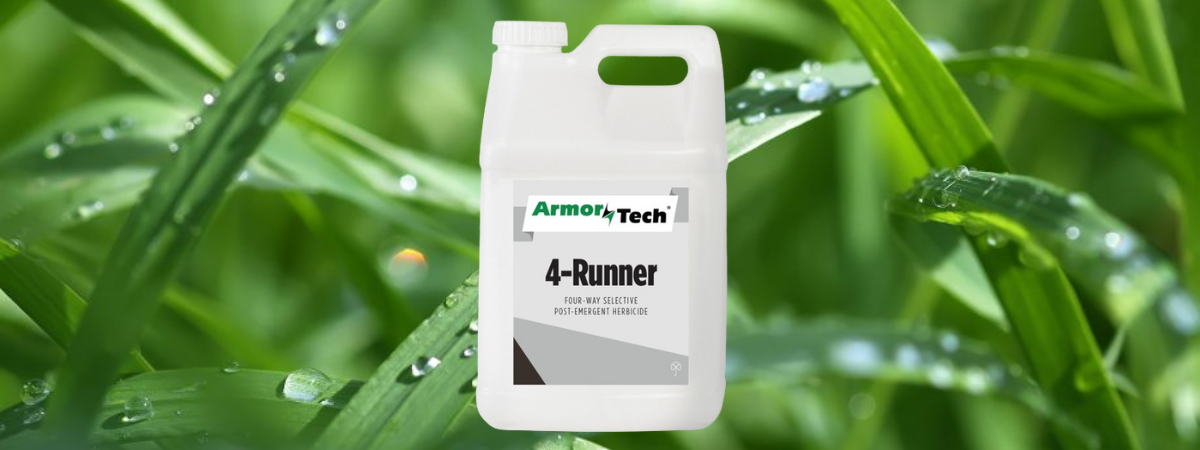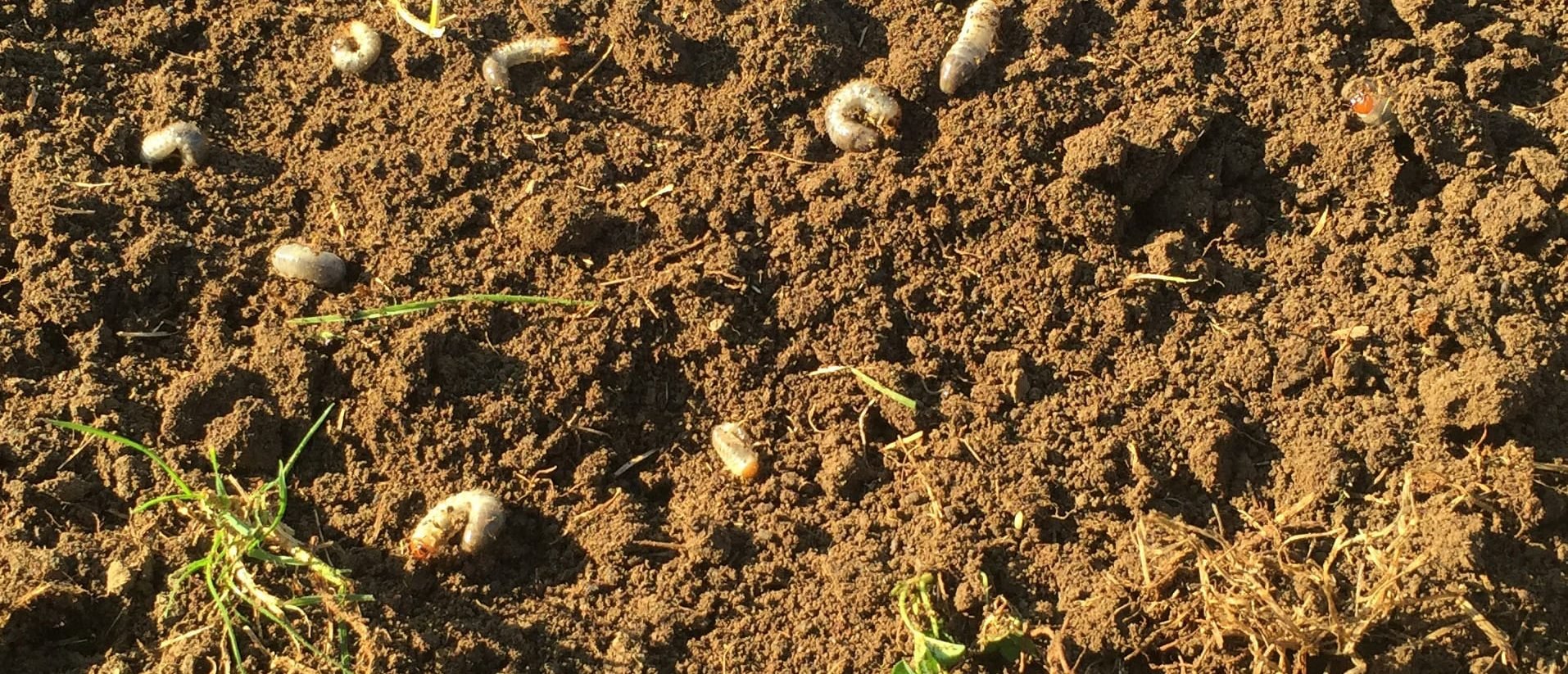Rose plants are a common sight in customers’ landscape beds and around homes, but a common ailment of rose leaves, black spot, can cause major damage to the leaves and even weaken rose plants themselves. This blog will cover what rose black spot is, its symptoms, and most importantly, how to get rid of it.
What is Black Spot?
Black spot is a disease caused by the fungus Diplocaron rosae that affects the leaves of rose plants. It causes black spots on the upper sides of leaves, which also develop a yellow ring around the spots before falling off entirely. While black spot will not kill rose plants, it will weaken them, leaving them susceptible to other dangers.

How Black Spot Spreads
Fungal spores appear on canes and/or infected fallen leaves and then spread to other leaves primarily via water/irrigation, wind, dew, and insects. Once the leaves are infected, fruiting bodies (acervuli) will develop and then produce spores, which cause black spot. These spores will then spread to surrounding leaves and tissue. Spores must remain wet for seven hours to cause infection.
Black Spot Timing
Black spot thrives when air temperatures are cool, and moisture is high, making the spring growing season a prime target for the disease. As temperatures increase in the summer, though, symptoms can slow down. Though symptoms are most common during cool, moist weather conditions, spores can remain active year-round in more mild climates, and spores on fallen leaves and in stem lesions (more on stem lesions in the next section) can survive the winter and return next season.
Symptoms of Black Spot
Black (and sometimes purple) spots will appear on rose leaves, beginning on the top surface of the plant’s lower leaves. They are small, ranging from around ½-inch on the high side to one-tenth of an inch on the low side. As the black spots grow, the leaves will begin to yellow around the spots and eventually fall off.

Black spot will work its way up the stems from the bottom until all the plant’s leaves are infected and fall off. As the disease progresses on the leaves, stem damage can occur, too. In some cases, reddish-purple dark spots may appear on immature canes and can blister. These are known as stem lesions, and they will be a vital part of the infection and spore creation process during the next growing season.
How to Treat Black Spot on Roses: Cultural Control and Prevention
Proper pruning, ample sunlight, and adequate watering are key factors that contribute to rose plant health. There are a few specific practices that can prevent the spread of black spot, too.
Prune and dispose of infected leaves. Once symptoms appear, immediately remove infected leaves to prevent the spread of black spot. Be sure to also pick up and dispose of leaves that have fallen, as those can still cause spread, too.
As mentioned before, the causal fungus can overwinter, so when fall begins, pick up dead leaves and mulch the area around rose plants/bushes (applying a layer of mulch will provide a good line of protection). Lawn care operators should also attempt to locate any diseased canes and prune them to prevent them from causing infection next year.
Keep leaves dry. As mentioned, spores have to be wet for seven hours in order to germinate, so LCOs should advise property owners to keep their rose plants dry as best they can and avoid overhead watering.
Keep gardening tools clean. The fungus can live on tools and in the soil for up to a month. Cleaning tools after they are used will help professionals and property owners avoid unintentionally spreading the disease.
Control Black Spot With Fungicide
It’s important to note that there is no ‘cure’ per se for black spot. Fungicide applications won’t help leaves and stems that are already infected, but they will prevent any future spread from taking place. Applied early enough, fungicides can completely prevent black spot when applied regularly at proper intervals. Always consult the label of your product of choice for application instructions and intervals.
Two standout fungicide options exist for treating black spot on roses:
- Eagle 20EW, a systemic, liquid fungicide product containing myclobutanil, is a versatile treatment for a wide range of ornamental diseases, including rose black spot. It offers both preventative and curative benefits and should be applied on a seven to 10 day protective schedule for black spot-affected areas, and every 14 days on areas unaffected by the disease. In greenhouse varieties, some sensitivity is possible, so treat a small number of plants to gauge for sensitivity before widespread application.
- ArmorTech TM 462, containing thiophanate-methyl, is designed for broad-spectrum control of diseases, including rose black spot. Applications should begin in early summer or whenever disease symptoms appear, whichever comes first. When the disease is present, apply every seven to 14 days. TM 462 should be applied at a rate of 10.75-20 fluid ounces per hundred gallons of water.
Other options exist, too, including:
- ArmorTech TEB 360 XL is a foliar fungicide containing tebuconazole that controls black spot on roses. It should be applied every 14-21 days during the growing season, beginning when leaves first appear.
- Reliant is a phosphite-based foliar fungicide that controls rose black spot. It should be applied when the disease is present until the point of runoff.
For additional information on rose black spot and how to treat it, reach out to your ATS rep.












